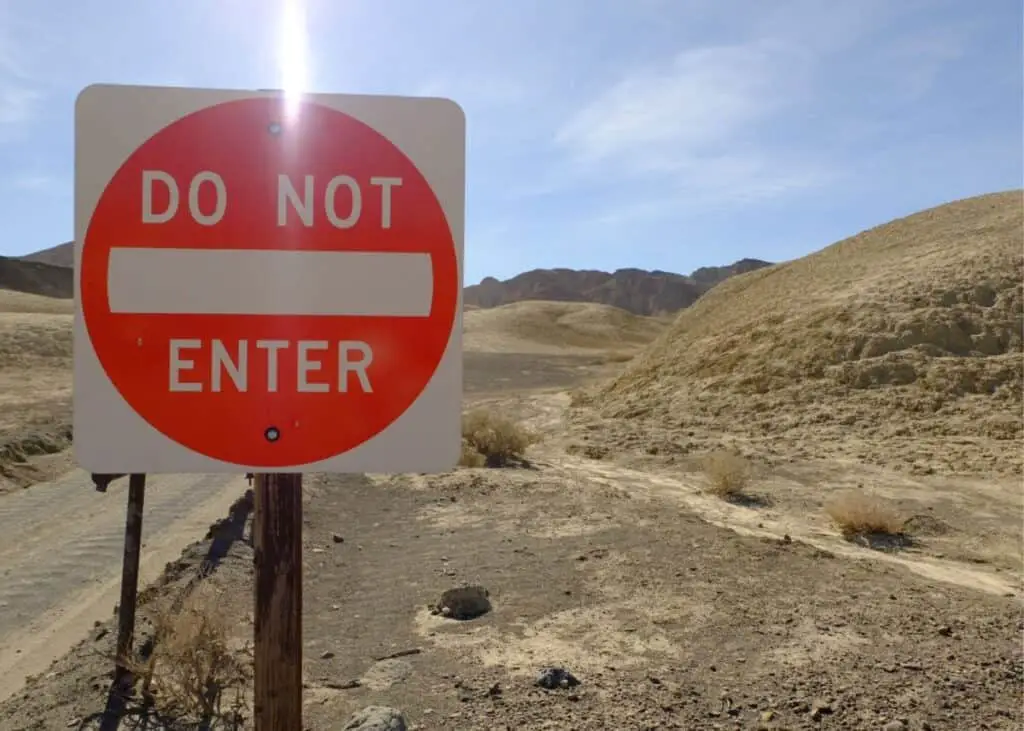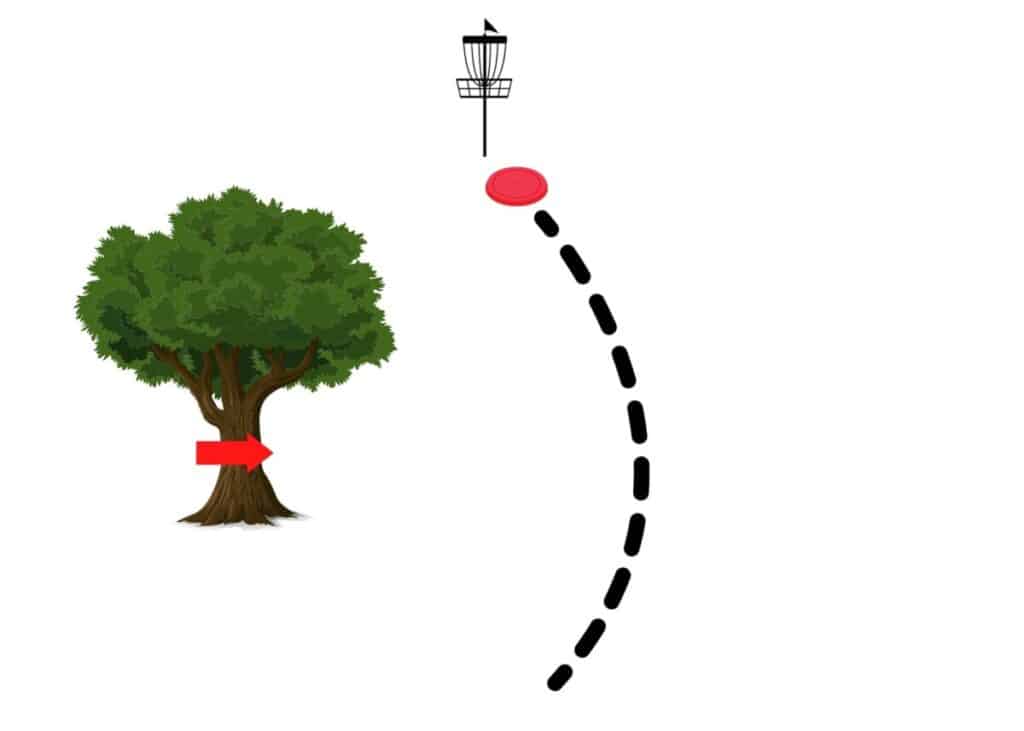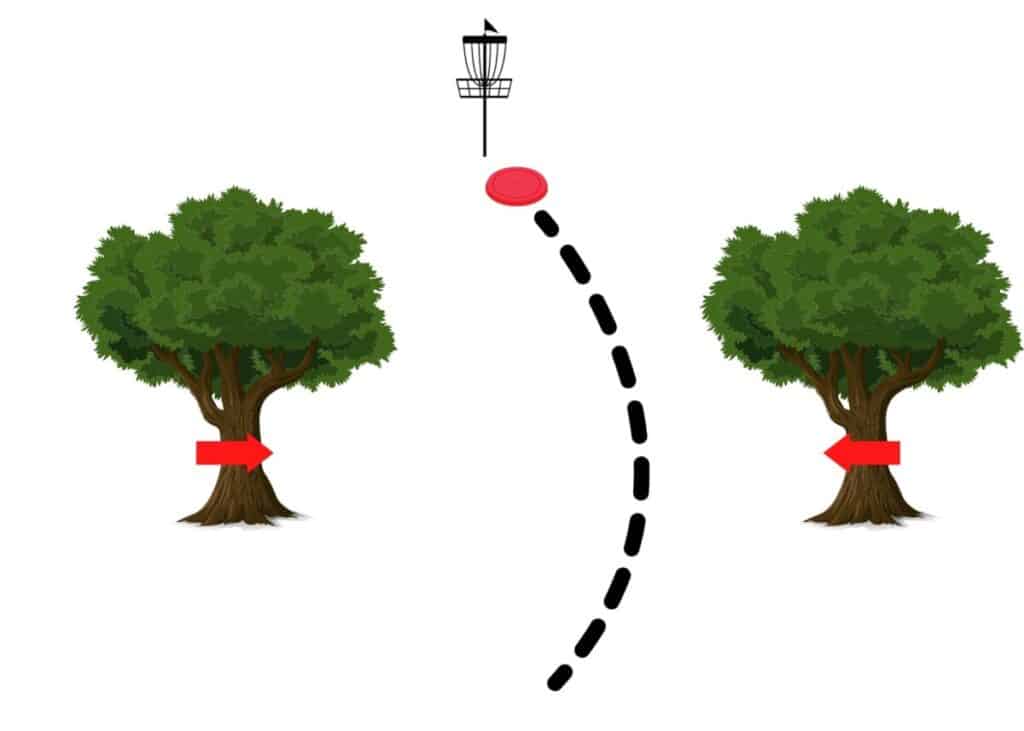The landscape of a disc golf course can change your approach to completing each hole. A mandatory, or mando is one of those obstacles. So, what happens if you miss the mando?
A mando isn’t very common but it’s in the rules that you have to abide by the mando. I’m going to cover what happens if you miss a mando, and explain what they are too.
Table of Contents
Here’s What Happens if You Miss a Mando in Disc Golf
If you miss a mandatory (mando) you’ll receive one penalty throw. A mando is missed when part of the thrown disc has entered a restricted space. The mandatory route is established to restrict the path of the disc to the basket or target. The restricted space is typically defined by an object or marker.
In this article, I’ll give examples of Mandos, what the rules are for missing, and how to not miss a mando.

What is a Mandatory (Mando)?
When a disc golf course is designed each hole is built to accommodate the current landscape and environment.
Sometimes there are objects like trees, poles, or even buildings that the designer intends for you to throw to one side only as you make your way to the target.
Another example of a mando might be if the fairway makes a dogleg to the basket, a more advanced player could throw a line to the basket that was not intended by the course designer.
Adding a mandatory route will eliminate a more experienced player from taking what is essentially a shortcut to the basket.
How Do Mandos Work in Disc Golf?
A mando is used for mostly practical reasons in disc golf. You’ll see a tree or some other object with an arrow pointing to the right or left.
This arrow is telling you what side to throw your disc on.

The mando is there to possibly discourage someone from throwing over another hole as a shortcut to the basket or to add some difficulty to the hole by making all players throw their discs in the same direction.
Always look for the arrow indicating to what side to throw your disc on. This is usually to the left or the right, but as I’ll discuss later, it could be up or down too, depending on the object.
There might even be multiple arrows working together which force you to throw between objects.

Rules For Missing a Mandatory (Mando)
The PDGA, which is the official governing body for disc golf sets forth some rules concerning a mandatory route. This is shown in PDGA rule 804.01.
According to the rule, if you happen to miss the mandatory you’ll receive a one-throw penalty. Pretty simple.
So, if your throw ends up on the wrong side of the mando, you’re going to have to take the one-throw penalty. But, the rule is also mentions something of interest here.
The rule for missing a mandatory also goes into more detail, saying that even if part of a thrown disc clearly enters into a restricted space, you’ll still receive the penalty.
I interpret this part of the rule to cover a throw that crosses over or around the mandatory route by then lands on the correct side of the mando.
Where to Throw From After Missing a Mando
After missing a mando, you’re going to take the one-throw penalty. But, the rules also state where you’ll need to take your next throw from.
If there is a drop zone specified for the mandatory, you’ll throw from the drop zone. If there is no drop zone, you’ll have to throw from your previous lie.
What is the Purpose of a Mandatory in Disc Golf?
1. Increase the Difficulty of the Hole
Many disc golf courses are designed to cater to recreational or amateur players. This is done so the course won’t be so hard that the general public will avoid playing on it.
Tournament Directors will sometimes create a mando to make a hole more difficult for the more advanced players in the tournament.
2. Safety Reasons
If the path to the basket or target crosses around an area that would be dangerous for players to enter, or near a public area like a parking lot, a mando might be placed to keep discs from entering.
3. Space Restrictions
Sometimes course designers will try to fit as many holes into the park or public land that is available for use.
Sometimes holes and fairways might be very close to each other. To keep discs from flying onto the fairways of other holes a mando can be used.
What is a Mando Left and Right?
A Tournament Director or a course designer might designate a route to the basket using a mandatory. The mandatory isn’t restricted to only one direction though.
A mando can show a route to the left or the right as required. A mando left and mando right is shown as a tree or some other object that designates the path to the left or right.
Sometimes these are marked on the course with an arrow pointing in the direction that the thrown disc should stay.
However, other paths could be required than just left and right as I’ll explain below.
Types of Mandos
The most common mando you’ll find on the disc golf course is either a left or right mando.
But, in some rare instances, there are more complicated mandos that require the disc to be thrown either over or under a mando.
A mando could even be a combination of directions that force you to throw a specific place or direction.
Traditional Mando
The most common mando is a traditional style that designates a route to the left or right of an object. This could also be described as just a single mando.
Double Mando
A double mando will force you to throw between two objects.
For example, if there is a tree to the left and the right, the mando might force you to throw between the two trees instead of throwing around one of the trees.
Triple Mando
The triple mando will combine a left, right, and another restriction for height.
For instance, there might be two trees to throw between, but also a mando to throw under as well. If there is an obstruction in the air, the mando will restrict throwing over it.
How to Not Miss a Mando
Not missing a mando means saving yourself from having to take the one-throw penalty and possibly throwing from the previous lie if there is no drop zone.
The best way to stay out of trouble is to not miss the mando in the first place. Below are some tips to never miss a mando.
1. Layup Short of the Mando
If you’re not sure if you can land your disc on the right side of a mando down-course, sometimes it’s better to just play it safe and lay up short of the mando.
You might end up saving a stroke down the line by not taking the penalty while still advancing your disc.
2. Practice Your Throws
If you know there is a mando on the course, make sure to take some practice rounds to find out the best way to manage the mando.
This is especially important before a competition or a tournament. Starting the hole with a plan to deal with the mandatory will give you some confidence.
3. Understand Where They Are Located
Sometimes, a mandatory is added only for a tournament. Even if you’re already familiar with the course, you’ll need to be aware if a mandatory was added to increase the difficulty of the hole.
If there is a mando added, it could change the way you play the hole. Plus, not knowing about the mando is not an excuse once the competition is underway.
Summary | What If I Miss a Mando?
Unfortunately, if you miss a mandatory, you’re going to be hit with the one-throw penalty. For a beginner player, a mando is a weird name and probably not fully understood.
But, once you understand what a mando is and why they are used, you’ll recognize them and be sure to not miss the mandatory route in the first place.
